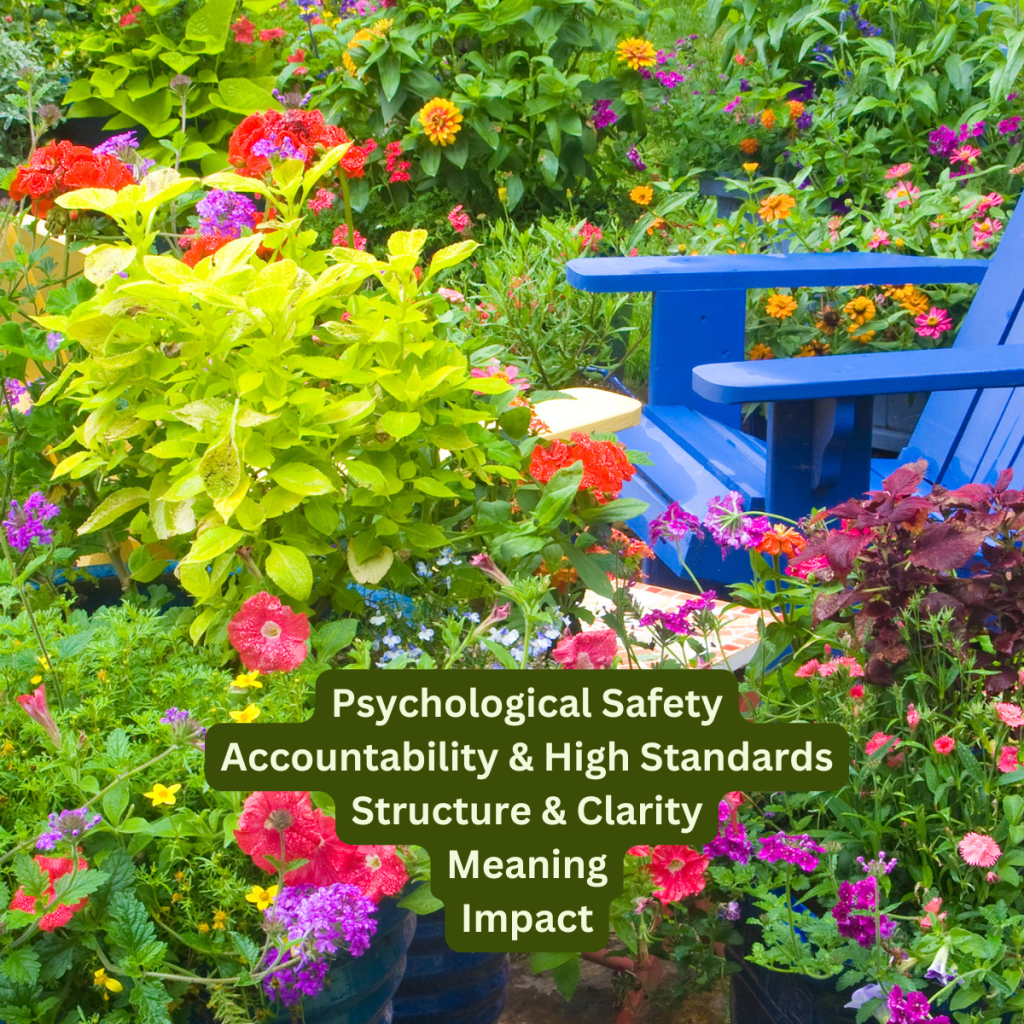If you’ve ever assembled IKEA furniture, you know the satisfaction of snapping the final piece into place – the perfect symmetry, the precision, the control. Everything fits exactly as planned. But have you ever tried controlling a garden? You can water, prune, and provide sunlight, but ultimately, the plants decide how they will grow. Some flourish, some struggle, and some surprise you by growing beyond your wildest expectations.
Effective leadership is much more like gardening than carpentry.
Years ago, I was in a lively debate with a fellow manager. He was all about being directive: blueprints, strict instructions, and measurable outcomes. “You must be clear, prescriptive, and direct,” he insisted. “It’s the only way to get results.” I, on the other hand, championed a more facilitative approach. “If you focus solely on control,” I joked, “you might end up with a showroom of inanimate furniture while I’ll have a thriving, blooming ecosystem.”
We laughed, but the conversation stayed with me. Later, while reading Alison Gopnik’s The Gardener and the Carpenter, a book about parenting, and by applying cross-domain thinking, I realized that gardening isn’t the absence of structure; it thrives because of it. Rich soil, ample sunlight, and proper care create the conditions for plants to flourish. Likewise, high-performing teams excel in environments that balance psychological safety, accountability, and high standards.
In his book Team of Teams: New Rules of Engagement for a Complex World, retired U.S. Army General Stanley McChrystal emphasizes, “The temptation to lead as a chess master, controlling each move of the organization, must give way to an approach as a gardener – enabling rather than directing.” He makes it clear: gardener-style leadership is anything but passive.

Why the Gardener Approach Produces High Performance
Google’s Project Aristotle, a deep dive into what makes teams successful, identified five key elements that drive high performance: psychological safety, dependability, structure and clarity, meaning, and impact. These principles align beautifully with the gardener’s mindset.
- Psychological Safety (Water): Just as water is essential for plant growth, psychological safety is vital for employees to take risks and share ideas. Without it, innovation dries up. But safety does not mean comfort; it means having the security to challenge ideas, push boundaries, and improve continuously.
- Accountability & High Standards (Sunshine): Like sunlight, accountability provides direction and energy. Plants lean toward the sun, and employees lean toward leaders who set clear expectations and hold them to high standards. A gardener doesn’t dictate how every leaf should grow but ensures enough light for all to thrive.
- Structure & Clarity (Soil): A thriving garden needs strong roots – a foundation where plants take hold. Similarly, high-performing teams need clear roles, objectives, and processes. Gardener leaders do not remove structure; they refine it to be adaptable and empowering.
- Meaning (Air): Just as plants absorb carbon dioxide to sustain life, meaning breathes purpose into work. Employees perform at their best when they understand why their work matters. Leaders must ensure that people see the connection between daily tasks and the bigger picture.
- Impact (Ecosystem): A healthy garden is an interconnected system where every plant plays a role. Likewise, employees thrive when they see the tangible impact of their efforts. Great leaders provide feedback loops, reinforcing how individual contributions drive team success.
Cultivating a High-Performance Leadership Garden
How do you create an environment for teams and individuals to flourish and excel? Here are three essential steps:
1. Nurture With High Standards, Don’t Micromanage – Leadership is not about molding employees into a single shape. It’s about providing resources, support, and challenges that push them to their best potential. High expectations and encouragement must go hand in hand. Lead with guidance, empower with nurture.
2. Build a Resilient, High-Talent Ecosystem – A monoculture garden is fragile, but a diverse one is strong, resilient, and agile. Similarly, high-performing teams embrace different perspectives, skills, and approaches. Encourage innovation, critical thinking, and problem-solving rather than demanding conformity.
3. Trust the Growth Process, Without Micromanaging – Just as you wouldn’t dig up a seed daily to check if it’s sprouting, resist the urge to micromanage. Empower employees with autonomy but hold them accountable for results and be available to provide guidance when asked. Growth requires both trust and responsibility.
The Final Harvest: Why High Standards and Nurturing Go Together
Reflecting on my debate with that manager, I realize he wasn’t wrong – just different. While occasionally, few situations may call for rigid structure, today’s workplace increasingly relies on employees’ judgment as knowledge workers and critical thinkers. The future of leadership isn’t about control – it’s about fostering adaptability, engagement, and trust.
A nurturing leadership approach does not mean lowering the bar. It means creating an environment where people rise to it. When leaders balance psychological safety with accountability, structure, and meaning, they don’t just get a compliant workforce; they cultivate a team of engaged, high-performing individuals.
Employees want to work for companies that challenge them, invest in their growth, and support their well-being. The most remarkable leaders, the ones who inspire and drive real impact, create ecosystems where people naturally grow into their best selves.
So, I ask you, are you leading like a carpenter, crafting rigid outcomes? Or are you leading like a gardener, fostering a high-performing, engaged, and thriving environment?
Your organization’s future might depend on the answer.
The views and opinions expressed in this content are my own and do not necessarily reflect the views or positions of any organization I am affiliated with.